Posts Tagged: Biological Orchard and Gardens
This BOG in the Heart of UC Davis Is a Treasure
"A bog is a wetland that accumulates peat, a deposit of dead plant material—often mosses, and in a majority of cases, sphagnum...
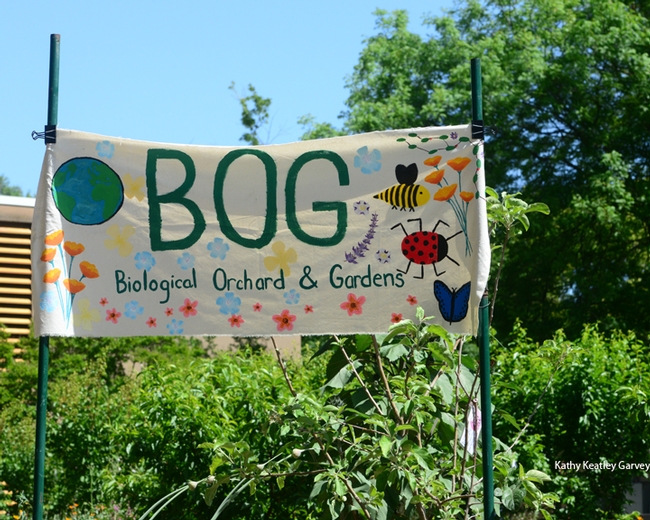
The Biological Orchard and Gardens (BOG) sign features floral and insect designs. It's located by the Mann Laboratory, UC Davis campus. (Photo by Kathy Keatley Garvey)
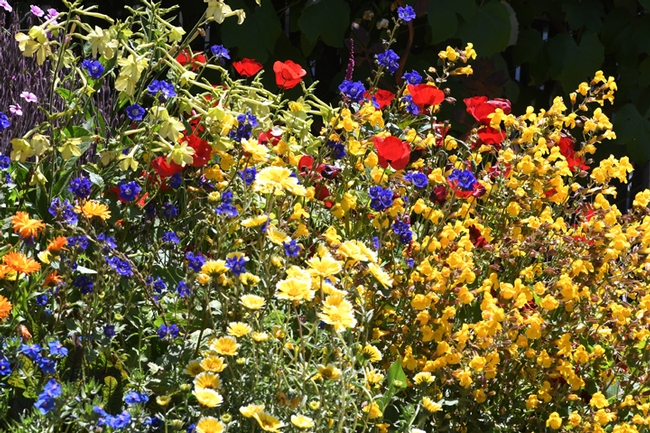
Colorful BOG garden in the early spring: among the flowers are tidy tips, desert bell, and European red flax. (Photo by Kathy Keatley Garvey)
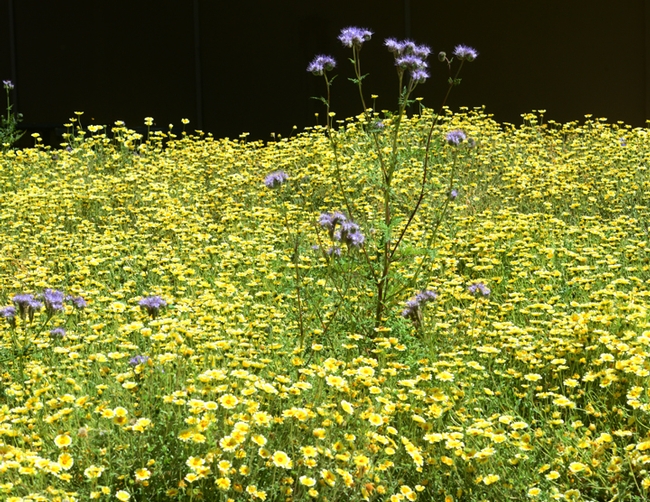
A mini-meadow of tidy tips, Layia platyglossa, with tall phacelia, Phacelia tanacetifolia. (Photo by Kathy Keatley Garvey)
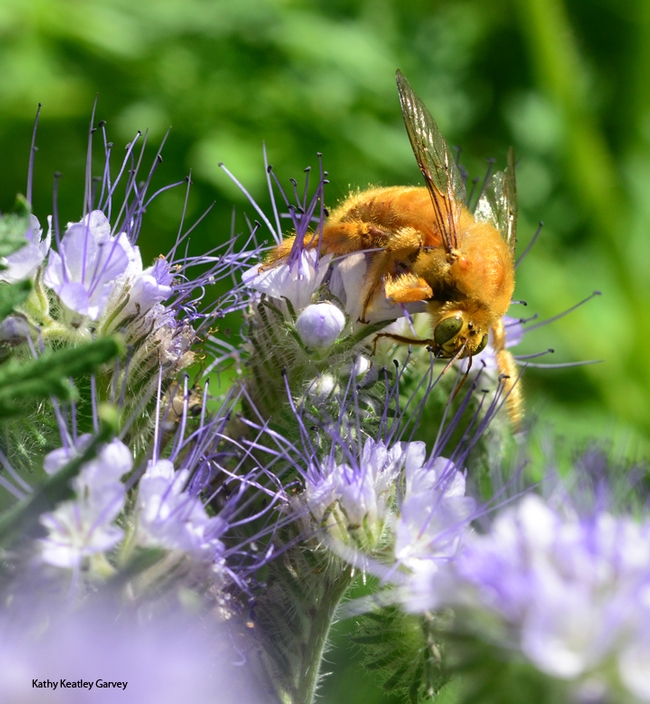
A male Valley carpenter bee, (Xylocopa varipuncta) forages on phacelia. (Photo by Kathy Keatley Garvey)
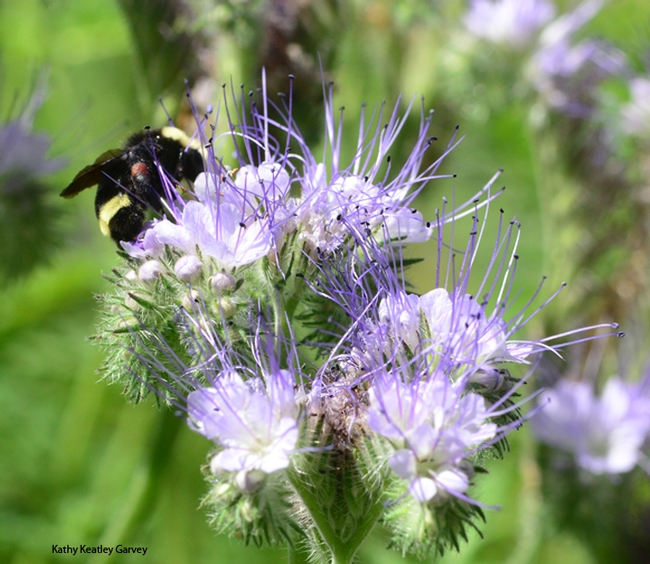
A yellow-faced bumble bee (Bombus vosnesenskii) sips nectar from phacelia. (Photo by Kathy Keatley Garvey)
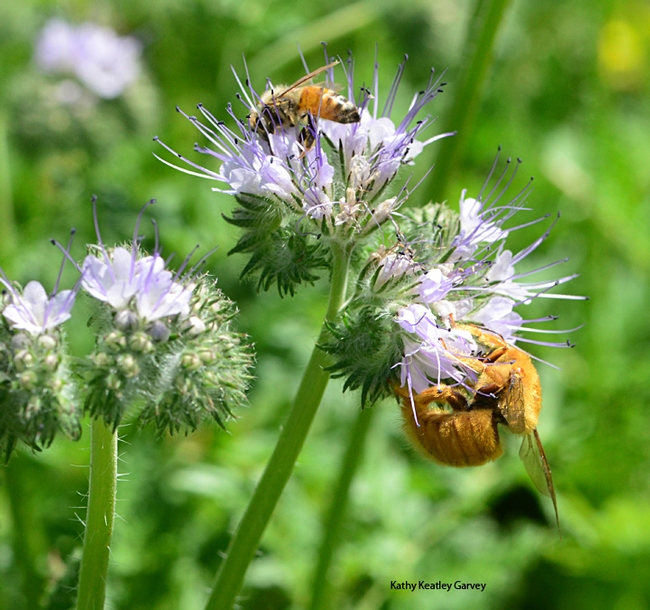
Size comparison! A honey bee is dwarfed by a male Valley carpenter bee, Xylocopa varipuncta. (Photo by Kathy Keatley Garvey)
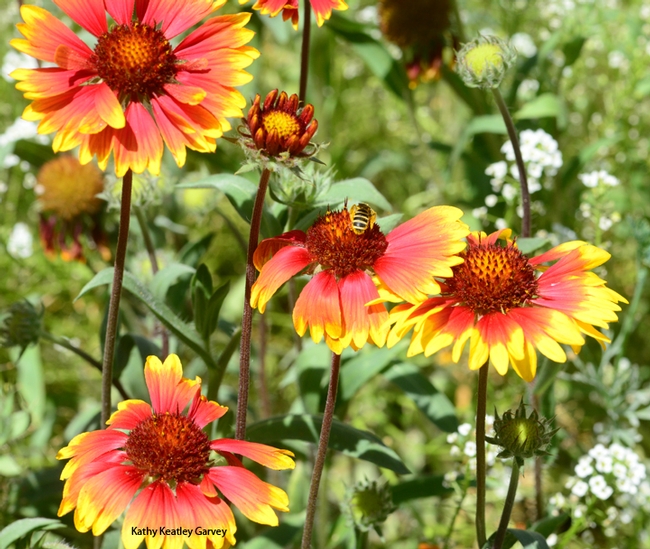
Many species of bees--as well as butterflies and other insects--are drawn to the blanketflower, Gaillardia. (Photo by Kathy Keatley Garvey)

